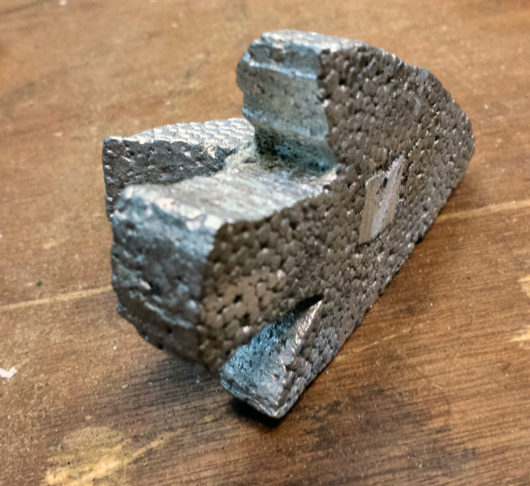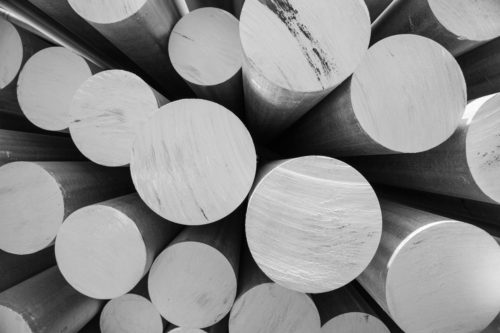The Best Strategy To Use For Stahl Specialty Company
The Best Strategy To Use For Stahl Specialty Company
Blog Article
A Biased View of Stahl Specialty Company
Table of ContentsNot known Factual Statements About Stahl Specialty Company Fascination About Stahl Specialty CompanyIndicators on Stahl Specialty Company You Need To KnowStahl Specialty Company Can Be Fun For AnyoneStahl Specialty Company Things To Know Before You Get This
The subtle difference lies in the chemical content. Chemical Comparison of Cast Light weight aluminum Alloys Silicon advertises castability by lowering the alloy's melting temperature level and enhancing fluidity during spreading. It plays a critical role in permitting complex molds to be filled accurately. Additionally, silicon adds to the alloy's toughness and use resistance, making it important in applications where resilience is crucial, such as automotive components and engine parts.It likewise boosts the machinability of the alloy, making it much easier to refine into completed products. By doing this, iron adds to the overall workability of light weight aluminum alloys. Copper increases electrical conductivity, making it useful in electrical applications. It likewise boosts deterioration resistance and adds to the alloy's total toughness.
Manganese contributes to the stamina of light weight aluminum alloys and enhances workability. Magnesium is a light-weight component that provides strength and impact resistance to aluminum alloys.
It allows the production of light-weight parts with excellent mechanical properties. Zinc enhances the castability of aluminum alloys and helps control the solidification process during casting. It improves the alloy's strength and hardness. It is typically discovered in applications where complex forms and great information are needed, such as decorative spreadings and specific vehicle parts.
Examine This Report about Stahl Specialty Company
Because aluminum-silicon alloys have excellent casting buildings, high gas residential properties, easy procedures, and outstanding corrosion resistance, aluminum-silicon alloys are most frequently used in the die-casting sector at home and abroad. At the same time, aluminum-silicon alloys are likewise reasonably early and extensively recognized alloys established and used in die-casting. After constant research and improvement, a lot of the current worldwide mainstream aluminum-silicon alloys have been settled and are absolutely nothing greater than A356, A360, A380, ADC12, B390, and A413.
The key thermal conductivity, tensile strength, yield stamina, and prolongation vary. Amongst the above alloys, A356 has the highest possible thermal conductivity, and A380 and ADC12 have the lowest.

Stahl Specialty Company Fundamentals Explained
In precision spreading, 6063 is well-suited for applications where detailed geometries and high-grade surface finishes are critical. Examples include telecommunication enclosures, where the alloy's superior formability allows for smooth and aesthetically pleasing designs while maintaining architectural stability. Similarly, in the Lighting Solutions sector, precision-cast 6063 components create classy and efficient lights fixtures that require detailed shapes and excellent thermal performance.
(https://www.4shared.com/u/OJO17Y0x/franceshoward64061.html)
The A360 exhibits remarkable prolongation, making it optimal for facility and thin-walled components. In precision spreading applications, A360 is fit for industries such as Customer Electronic Devices, Telecommunication, and Power Devices.

In accuracy casting, aluminum 413 beams in the Consumer Electronic Devices and Power Equipment industries. It's generally utilized to craft intricate parts like mobile phone real estates, cam bodies, and power tool coverings. Its accuracy is remarkable, with limited tolerances approximately 0.01 mm, guaranteeing remarkable product setting up. This alloy's exceptional deterioration resistance makes it a superb choice for outside applications, ensuring resilient, durable items in the mentioned markets.
Stahl Specialty Company - Questions
The light weight aluminum alloy you select will significantly impact both the casting procedure and the properties of the last product. Because of this, you should make your choice carefully and take an informed method.
Identifying the most ideal light weight aluminum alloy for your application will imply considering a vast selection of attributes. These comparative alloy characteristics adhere to the North American Die Casting Organization's guidelines, and we have actually split them into 2 classifications. Foundry. The initial classification addresses alloy characteristics that influence the manufacturing procedure. The second covers characteristics impacting the homes of the final product.
The alloy you choose for die spreading directly impacts several facets of the spreading process, like just how very easy the alloy is to function with and if it is susceptible to casting defects. Warm splitting, also referred learn this here now to as solidification breaking, is a regular die casting problem for light weight aluminum alloys that can result in interior or surface-level rips or splits.
How Stahl Specialty Company can Save You Time, Stress, and Money.
Certain aluminum alloys are more at risk to hot cracking than others, and your choice needs to consider this. An additional usual issue located in the die spreading of light weight aluminum is pass away soldering, which is when the actors stays with the die wall surfaces and makes ejection tough. It can damage both the cast and the die, so you ought to search for alloys with high anti-soldering properties.
Deterioration resistance, which is currently a remarkable feature of aluminum, can vary significantly from alloy to alloy and is a vital characteristic to consider depending on the ecological conditions your item will certainly be subjected to. Wear resistance is an additional residential or commercial property frequently looked for in aluminum items and can separate some alloys.
Report this page